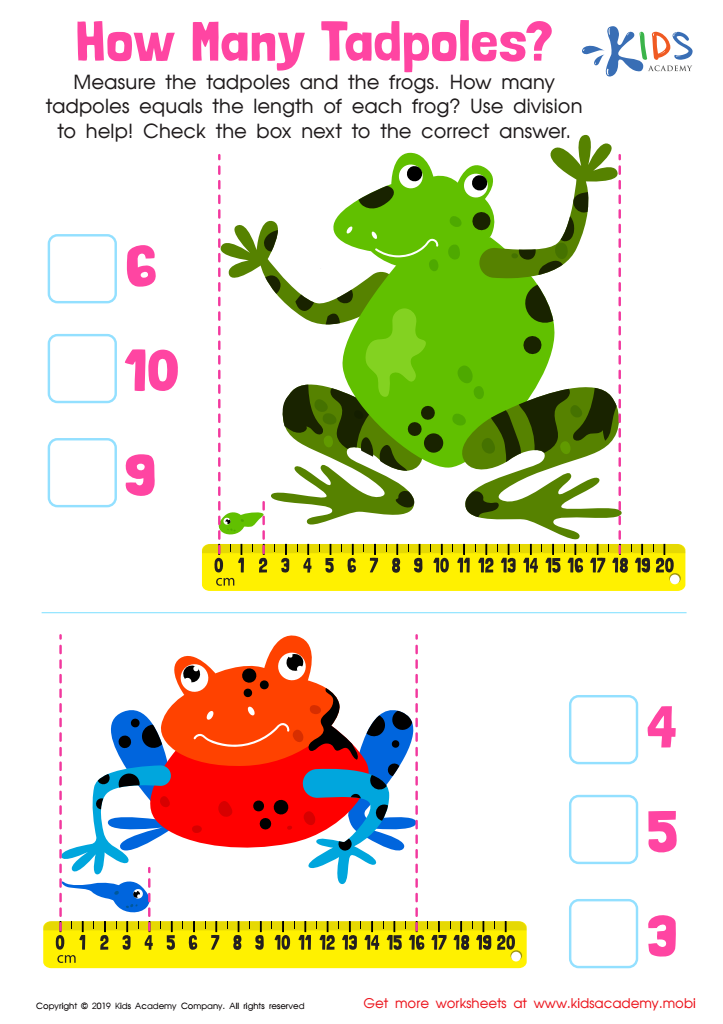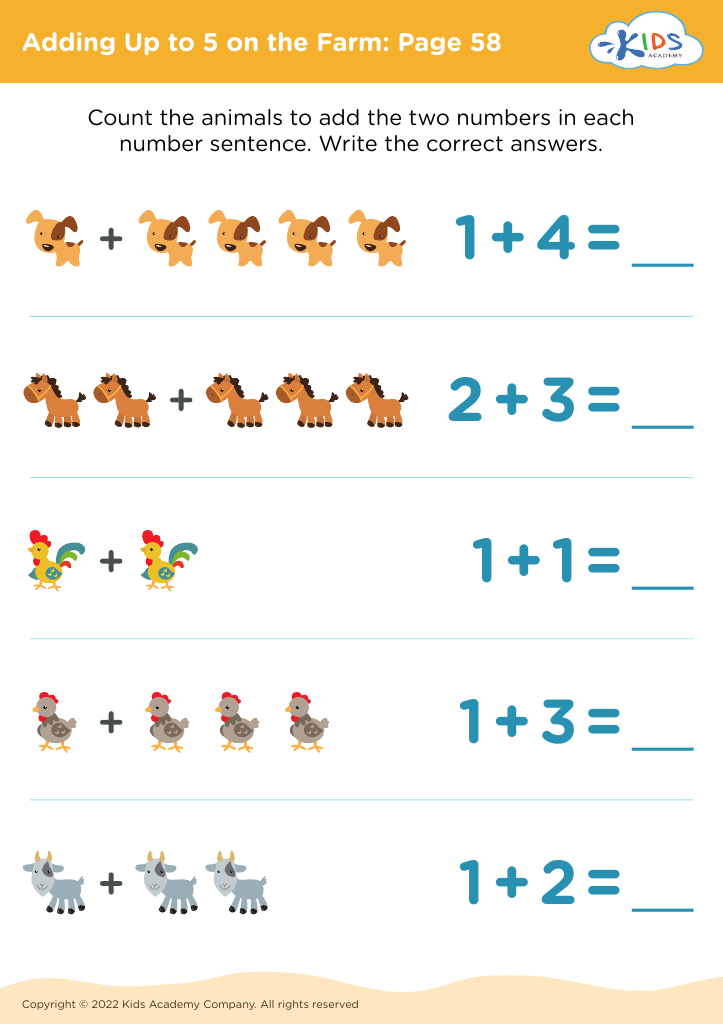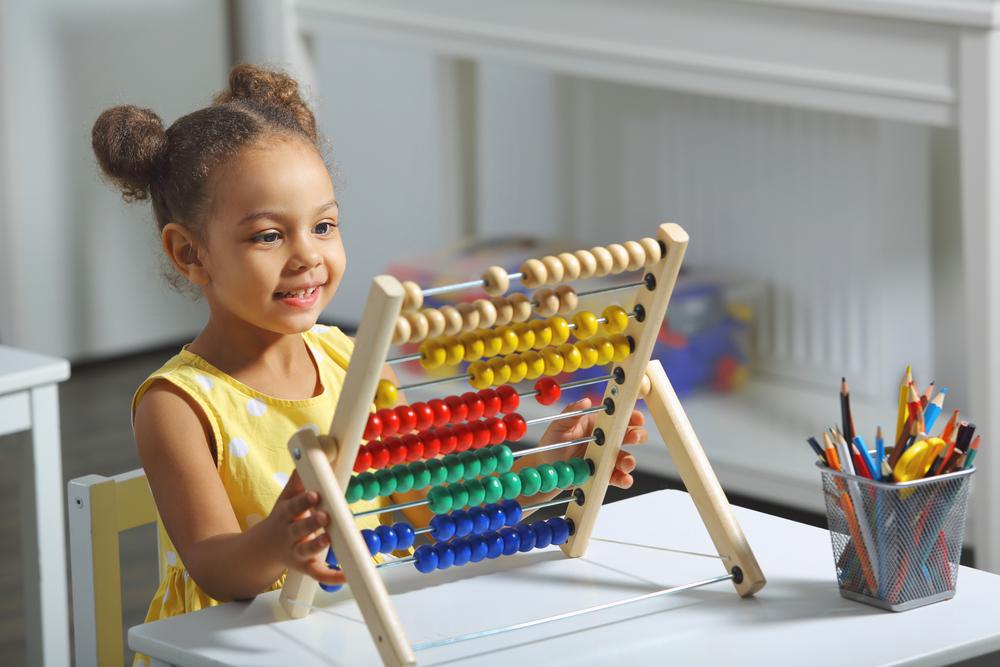Observation skills Math Worksheets for Ages 5-8
5 filtered results
-
From - To
Boost your child's learning with our engaging Observation Skills Math Worksheets, designed for kids aged 5-8. These interactive worksheets encourage young learners to develop critical observation skills through fun math activities. By focusing on shape recognition, pattern identification, and comprehension challenges, these resources help build a solid foundation in math. Perfect for homeschooling or classroom use, our worksheets provide a variety of exercises that make learning enjoyable and effective. Watch as your child becomes more confident in their math abilities while honing essential observation skills. Explore our collection and support your child's educational journey today!


How Many Tadpoles Worksheet


The 5 Sense Scientist Worksheet


Finding 16 With Fossils Worksheet
Observation skills in math for children aged 5-8 are crucial for several reasons. First, these skills lay the foundation for critical thinking and problem-solving. When children learn to observe their surroundings and identify patterns, shapes, and quantities, they develop analytical thinking. This is essential for later, more complex mathematical concepts.
Furthermore, observation fosters engagement and curiosity. By encouraging children to actively observe mathematical concepts in the world around them, such as counting apples or measuring ingredients, they begin to see math not as an abstract subject, but as a vital part of everyday life. This connection can spark a lifelong interest in learning.
Additionally, observational skills enhance communication. Children learn to articulate their thought processes when explaining their observations, which enhances both their math and language skills. Teachers and parents play a pivotal role by creating opportunities for discussions around observations, facilitating rich, contextual learning experiences.
Finally, developing strong observation skills helps children build confidence in math. When they can recognize mathematical concepts in familiar settings, it reduces anxiety around the subject and encourages independent exploration. Therefore, fostering observation skills early on is integral to children's overall mathematical development and confidence.
 Assign to My Students
Assign to My Students























